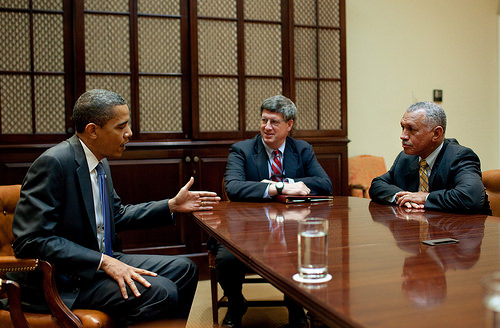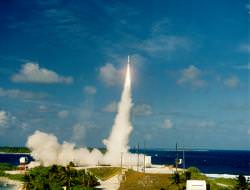US President Barack Obama’s met with NASA administrator Charlie Bolden on Wednesday at the White House. What happened? Not much, as far as anyone can tell. The meeting was short, and no real details have emerged of what might have been discussed or decided. “The two spoke about the Administrator’s work at NASA and they also discussed the Augustine Committee’s analysis,” a White House spokesman told Florida Today. “The President confirmed his commitment to human space exploration, and the goal of ensuring that the nation is on a sustainable path to achieving our aspirations in space.”
The Hunstville Times reported that the two also discussed options for how the country might improve its future human spaceflight activities.
So, no announcement on what “path” NASA will take as a result of the Augustine Commission, or if the Constellation program is staying or going.
While earlier this week, there was hope that Wednesday’s meeting might result in an announcement of NASA’s future, now there are hints that perhaps such an announcement might be part of the State of the Union Address in January, or perhaps a statement regarding the President’s decisions on NASA won’t come until sometime in February.
The U.S. Senate approved a budget of $18.7 billion that the President needs to make a decision on. But The Orlando Sentinel reported that also on Wednesday, Bolden told lawmakers and Congressional staff that the White House was now favoring a $1 billion top line increase to NASA’s budget in 2011. This would be far better than the 5 percent cut that all agencies, including NASA, were asked by the White House to prepare, but difficult to secure given the current deficit-cutting mindset in Congress.
Space Politics also reported on that on Wednesday, unfortunately, Speaker of the House Nancy Pelosi said she was not a “big fan” of human spaceflight. “I have not been a big fan of manned expeditions to outer space, in terms of safety and cost,” she said. “But people could make the case; technology is always changing.”
Any additional spending for NASA, she said, would have to be evaluated against other programs, and “a judgment will be made as to what it does in terms of job creation.” She added that while human missions to the Moon “would be fine” but appeared to be more skeptical about “personned” missions to Mars.
So for now, we wait. Some more.
Sources: Florida Today, Huntsville Times, Space Politics


